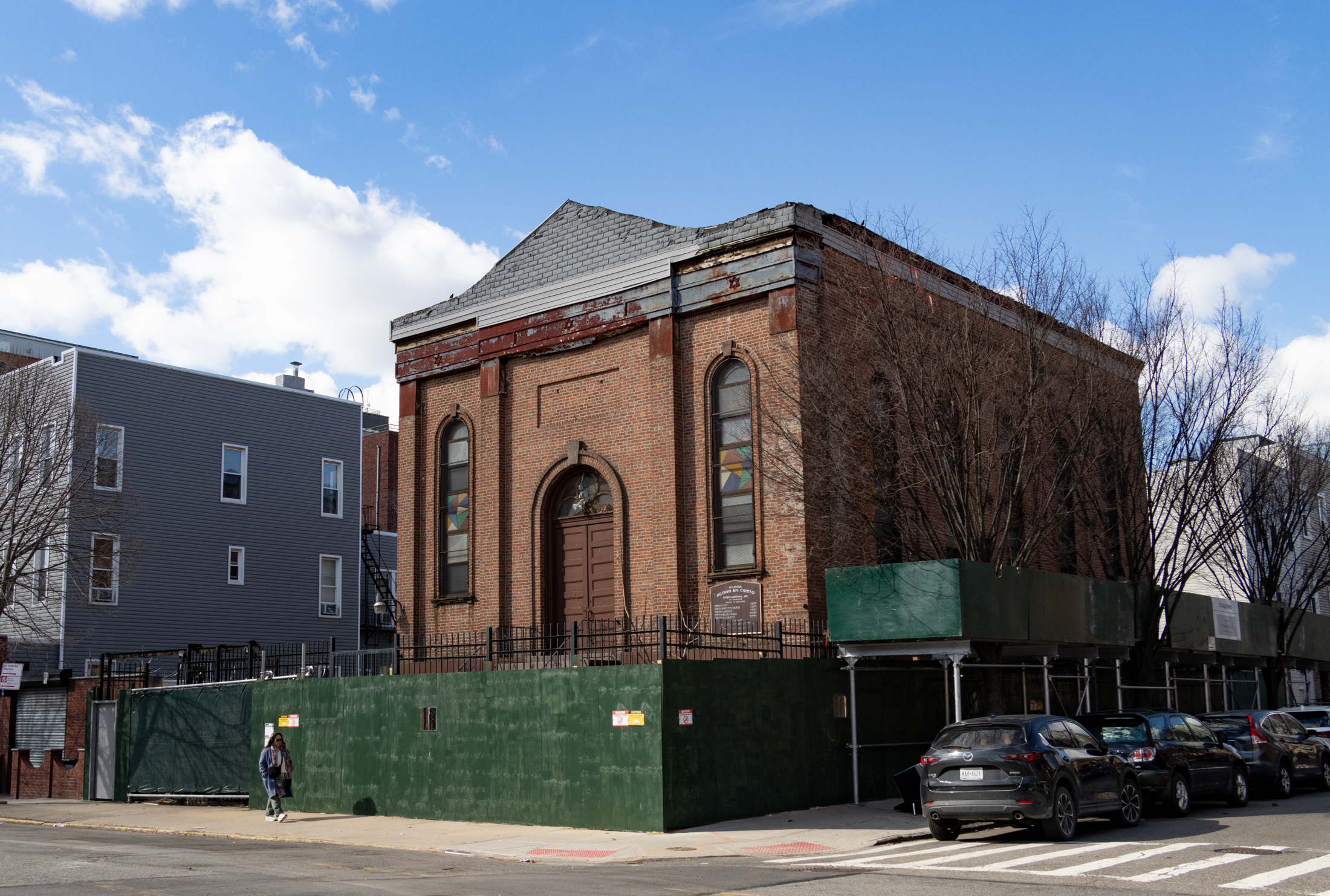Building of the Day: 228 North 12th Street
Brooklyn, one building at a time. Name: Russian Orthodox Cathedral of the Transfiguration of Our Lord Address: 228 North 12th Street Cross Streets: Corner Driggs Avenue Neighborhood: Williamsburg Year Built: 1916-1921 Architectural Style: Russian Byzantine Architect: Louis Allmendinger Other Work by Architect: Gobel mansion, Highland Park; Mathews Model Flats, Ridgewood; Glenwood Theater, Ridgewood; various factories in…

Brooklyn, one building at a time.
Name: Russian Orthodox Cathedral of the Transfiguration of Our Lord
Address: 228 North 12th Street
Cross Streets: Corner Driggs Avenue
Neighborhood: Williamsburg
Year Built: 1916-1921
Architectural Style: Russian Byzantine
Architect: Louis Allmendinger
Other Work by Architect: Gobel mansion, Highland Park; Mathews Model Flats, Ridgewood; Glenwood Theater, Ridgewood; various factories in Brooklyn and Queens.
Landmarked: Yes, individual landmark (1969), National Register of Historic Places (1980)
The story: When you pass this building, or see its distinctive onion domes from the BQE, you feel like you are standing in Russia. This church is one of the most evocative Russian Orthodox churches in the city. The architect of this space never did anything like it before, or afterwards. With one building of such majesty, Louis Allmendinger put himself on the map as the architect of one of Brooklyn’s most beautiful churches. And that’s saying something, here in the Borough of Churches.
By 1880, immigrants from the Austro-Hungarian kingdom of Galicia, now part of Poland, had settled in the Williamsburg/Greenpoint area, as well as in nearby Maspeth in Queens. Many of them wanted to have a place to worship, so like most fledgling churches and temples in Brooklyn, this Orthodox church started in the home of a parishioner, and grew in numbers there until enough money could be raised to buy the first church building. A vacant wooden Methodist church building on North 5th and Bedford was purchased, and renovated to the needs of a Russian Orthodox congregation. The dedication of this church, called St. Vladimir’s, took place in 1908.
By 1916, the congregation had outgrown this building, and a search for buildable land resulted in the purchase of five lots here on the corner of Driggs and North 12th Street. There is no record of how Louis Allmendinger got the job, whether by competition, recommendation or word of mouth, but he proceeded to design a distinctive church, as Russian Orthodox in every way as any back in Eastern Europe.
His design was based on the Cathedral of the Dormition within the Kremlin, in Moscow. It has five onion domes supported by columns, a classic feature of Byzantine architecture, and the basis of much of Russian architecture. The church plan is a Greek cross, but the addition of the four squared towers at each intersection of the cross makes the building almost a square. Each tower is capped by a copper-covered onion dome, which draws the eye to the central dome, an enormous onion dome that covers the main axis crossing of the Greek cross. It, too, is covered in copper, and is crowned with a large gilded Russian Orthodox cross.
One of Allmendinger’s largest projects had been the Mathews Model flats, a large group of row house flats in nearby Ridgewood in Queens. These now landmarked buildings were built of the same materials he used here in the cathedral, warm beige-yellow bricks that add lightness to this vast cathedral. Since this church’s congregation also came from Queens, perhaps this is the connection – perhaps some of them lived in the Mathews flats, and thus, the recommendation.
The completion of the cathedral was held up by World War I, causing the congregation to have to sell St. Vladimir’s before the building was finished. They ended up worshiping here long before that. Parts of the iconostas, the elaborate screened panels of icons and carved ornamentation that separates the altar from the rest of the sanctuary, was brought here, and used in a side altar dedicated to St. Vladimir. But at last, in 1922, the entire cathedral was completed and was consecrated with great pomp and ceremony in September of 1922.
The interior is adorned in the rich, gilded tradition of the Russian Orthodox Church. The new iconostas is a magnificent three-door screen which dominates the interior space. When the center door is opened, the altar can be seen by the congregation. Every surface is covered in icons, paintings, gilding and decoration, with beautiful stained glass windows, gilded light fixtures and expertly fashioned faux marble columns. It is a visual feast, almost too much to take in, a truly grand Russian Orthodox cathedral.
They almost lost the church during the Depression, but the congregation pulled through, and paid off its mortgage. By the late 1960s, a campaign was needed to raise money for necessary repairs as well as regilding of fixtures, new altar cloths and banners, and the like. In the late 1990s, more was needed for structural repairs to the roofs, windows and those beautiful domes. Thanks to grants, including one from the Parks Department, as well as private donations, the Cathedral was able to do the necessary repairs, and it remains one of the largest and most beautiful houses of worship in the entire city. GMAP
(Photo: Christopher Bride for PropertyShark)
















What's Your Take? Leave a Comment